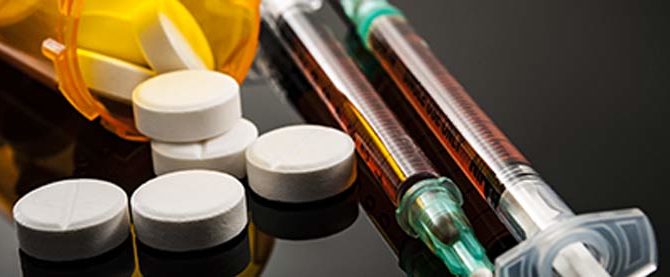
The Ins and Outs of Opiates Detox
Opioids, whether it be opiates in prescription medication or recreational drugs, are highly addicting and therefore lead to difficult experiences with withdrawal. When ingested, opioids incite feelings of intense pleasure and relaxation by stimulating receptors in the brain.
For those who become addicted, this dopamine slowly loses its ability to release itself in the absence of the drug—because of this, halting the use of opioids even for a little bit can cause an individual suffering from addiction to experience withdrawal symptoms almost immediately.
Opioid Withdrawal
Although there are many different kinds of opiates, withdrawal is generally similar across the board in terms of symptoms. The only main difference is when exactly withdrawal symptoms will begin and roughly how long they will last. Heroin withdrawal usually begins eight to 12 hours post-ingestion and lasts up to a week whereas Buprenorphine/Naltrexone withdrawal usually begins about 36 to 48 hours post-ingestion and can last around three weeks.
However, the severity and duration of these symptoms can also depend on how long the individual was using for and how much on average they were ingesting on a daily basis. Overall, serious opiate withdrawal can last from one to three weeks and some symptoms can pop back up on an irregular basis after as well.
According to the Substance Abuse and Mental Health Services Administration, the most common signs and symptoms of opioid withdrawal are as follows:
- Quickened pulse
- High blood pressure
- High body temperature
- Insomnia
- Enlarged pupils
- Heightened reflexes
- Sweating
- Gooseflesh
- Increased respiratory rate
- Teary eyes
- Yawning
- Runny nose
- Muscle spasms
- Abdominal cramps
- Nausea and vomiting
- Diarrhea
- Bone and muscle pain
- Anxiety
Although none of these signs or symptoms are life-threatening in general, it is important to note that without proper medical supervision they will increase in severity throughout withdrawal. Those who suffer from conditions such as cardiac issues, infection, anxiety disorders, and generally anything involving pain are likely to experience an intensification in those symptoms as well.
Therefore, it is extremely important that detoxification, especially for those who have been suffering from extreme opioid addiction for a long period of time, seek medical detoxification treatment either in an inpatient or outpatient program. This way, signs and symptoms can be managed properly with or without medication under the guise of a trained professional.
Opioid Detoxification Treatment
Medical opioid detoxification is the recommended form of treatment for anyone who is seeking to withdraw. While it is possible for individuals to successfully withdraw without the supervision of a professional, those who suffer from the most severe opioid addictions will find their detoxification process more efficient in an inpatient or outpatient setting. Rather than allowing individuals to quit through the “cold turkey” method, most participants in medical detoxification will slowly withdraw through a tapering method.
Through the tapering method, doctors will create a plan in order for their patients to slowly reduce the amount of opiate they consume on a periodical basis until they are no longer reliant on it anymore. By slowing the withdrawal process, there is less opportunity for severe consequences of any symptoms—rapidly quitting can increase withdrawal symptoms and make the detoxification process much more painful.
Oftentimes, detoxification programs will manage withdrawal by using small doses of approved medications to mitigate symptoms and ease the process. Many of these approved medications, such as Buprenorphine/Naltrexone, are only allowed to be used in certain licensed programs where withdrawal symptoms are more serious or require hospitalization. The administration of these medications is another reason why seeking professional oversight during detoxification is important—access to these medications is restricted and they are best used when a doctor is present to prescribe an appropriate dose and oversee any possible signs of relapse or complication.
Whether or not detoxification takes place in an inpatient or outpatient setting, it is important to remember that detox itself is absolutely not the only form of treatment individuals suffering from addiction should participate in. Detoxification is only the first and most important step in a longer process that includes psychological and behavioral therapy to tackle the mental root of addiction, not just the physical aspect of it.
Sources:
https://store.samhsa.gov/sites/default/files/d7/priv/sma15-4131.pdf
https://www.cdc.gov/drugoverdose/pdf/clinical_pocket_guide_tapering-a.pdf